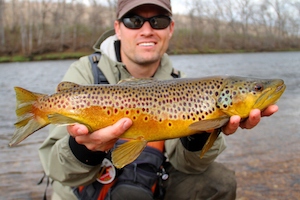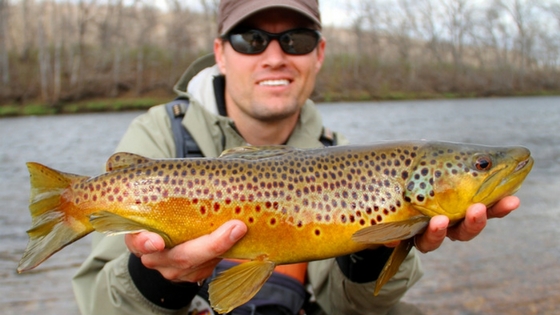Brown Trout Winter Fishing

In the early winter, before the ice takes hold, Brown Trout can easily be caught with a dry fly.
Brown Trout are a lot of fun to catch.
Bait for Brown Trout
Don’t believe all the talk that Brown Trout are fussy eaters. They’re not.
However like many other fish they’re primed for whatever is popular for a given day and will tend to ignore other baits for some time.
If you don’t know what their biting on, keep the top 3 baits for the lake you’re fishing with you and you’ll be sure to do well.
A top bait that proves successful one day won’t get a bite the next time we go out. That’s why its important to keep a few top baits and lures handy. If one one hasn’t worked in 15 minutes, give something else a go.
Insects work best during the spring when they’re out in abundance naturally, but these can still work in early winter before the ice forms. Use when fly fishing rather than casting.
- Top insect baits include ants, beetles, worms, caterpillars and gnats.
Bait fish, otherwise known as small fish, are used as food for predatory fish. These include smelt, alewives, minnows and even small trout and salmon.
- For the Great Lakes, smelt are very popular as are fathead minnows and golden shinners
- Brown Trout will also go after crayfish, a top bait for all freshwater fish
- Frogs are another top bait
The Brown Trout will also chase after a streamer.
6 tips for getting the Best Results
- Use dry flies and cast them towards the shore where there are overhanging shrubs and trees that are popular for insects.
- Areas that have a lot of grasses are also popular. When casting your flies, let the flies drop lightly as though they’ve just fallen from a tree or shrub.
- Consider night fishing. This is a time when the large Brown Trout come out and are active feeders. But wait some 30 minutes after sunset as they need time for their eyes to adjust before they begin active feeding.
- Brown Trout prefer the cover of sunken logs, branches and shrubs. They also like to be around rock piles and rocky ledges. While they are a predatory fish, other fish feed on them and they like cover.
- For Ice Fishing, drill a few holes over the lake bottom where you expect there’s sunken debris and rock piles.
- Multiple holes will prove more successful than a single hole.
They’re not an overly difficult fish to catch as they’re not very fussy in the baits that they enjoy.
They’re abundant in numbers and can be found in many lakes in the United States and Canada.



